Charting a New Path in Application Management: iAM and the Blue Ocean Strategy
Overcome the challenges of siloed tools & fragmented data with Intelligent Application Management (iAM). Unlock seamless IT operations with actionable insights.
Read moreAutomation in IT operations enable agility, resilience, and operational excellence, paving the way for organizations to adapt swiftly to changing environments, deliver superior services, and achieve sustainable success in today's dynamic digital landscape.
Next-generation application management fueled by AIOps is revolutionizing how organizations monitor performance, modernize applications, and manage the entire application lifecycle.
AIOps and analytics foster a culture of continuous improvement by providing organizations with actionable intelligence to optimize workflows, enhance service quality, and align IT operations with business goals.
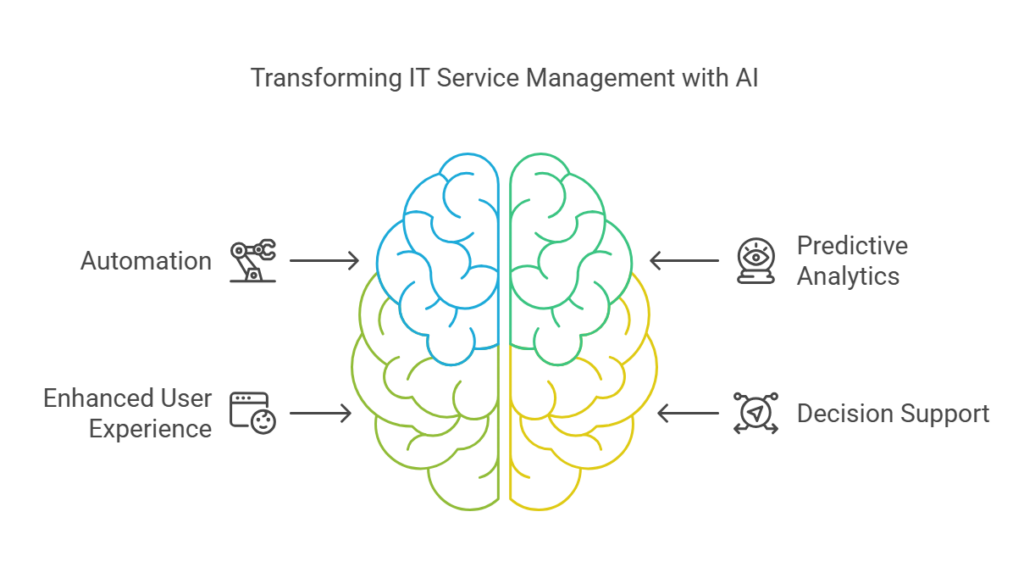
Artificial intelligence (AI) is no longer a futuristic fantasy; it’s reshaping industries, and IT Service Management (ITSM) is feeling the impact in a big way. AI’s ability to automate, analyze, and provide intelligent insights is transforming how IT teams operate, leading to improved efficiency, reduced costs, and – most importantly – happier users.
A recent survey found that 48% of M&A professionals are now using AI in their due diligence processes, a substantial increase from just 20% in 2018, highlighting the growing recognition of AI’s potential to transform M&A practices.
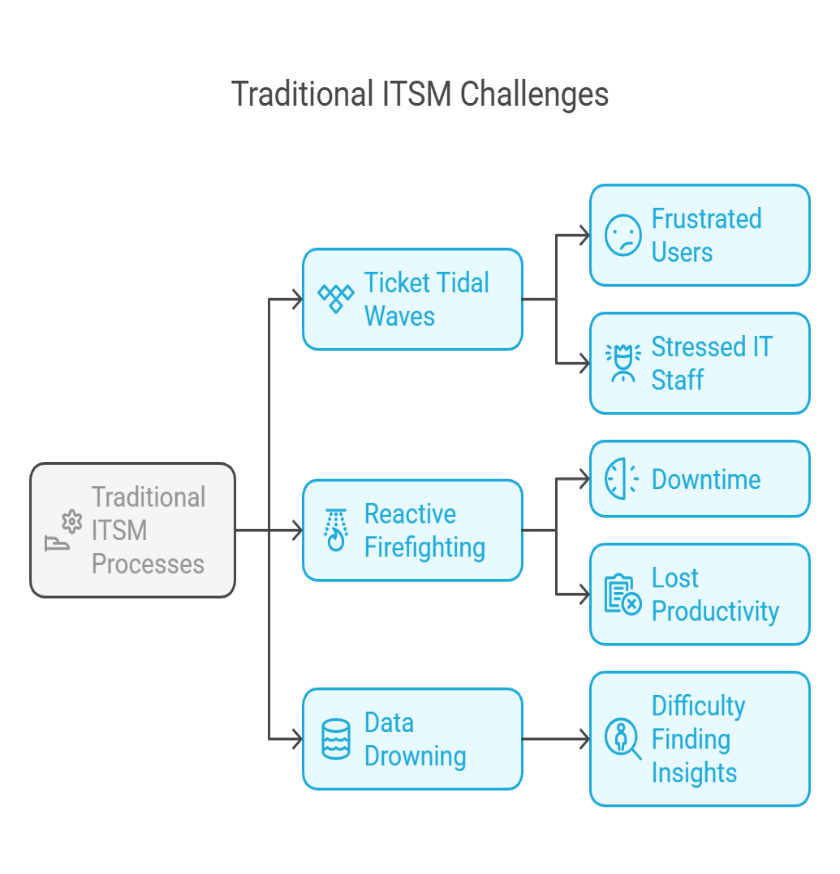
Traditional ITSM processes often hit a wall when faced with:
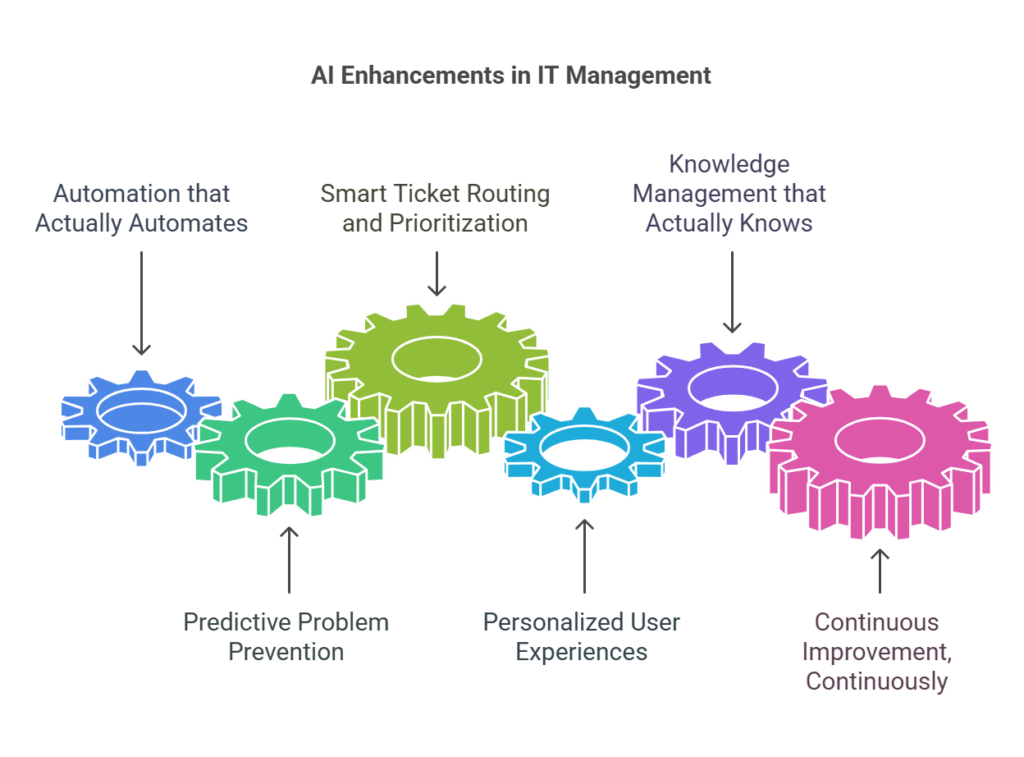
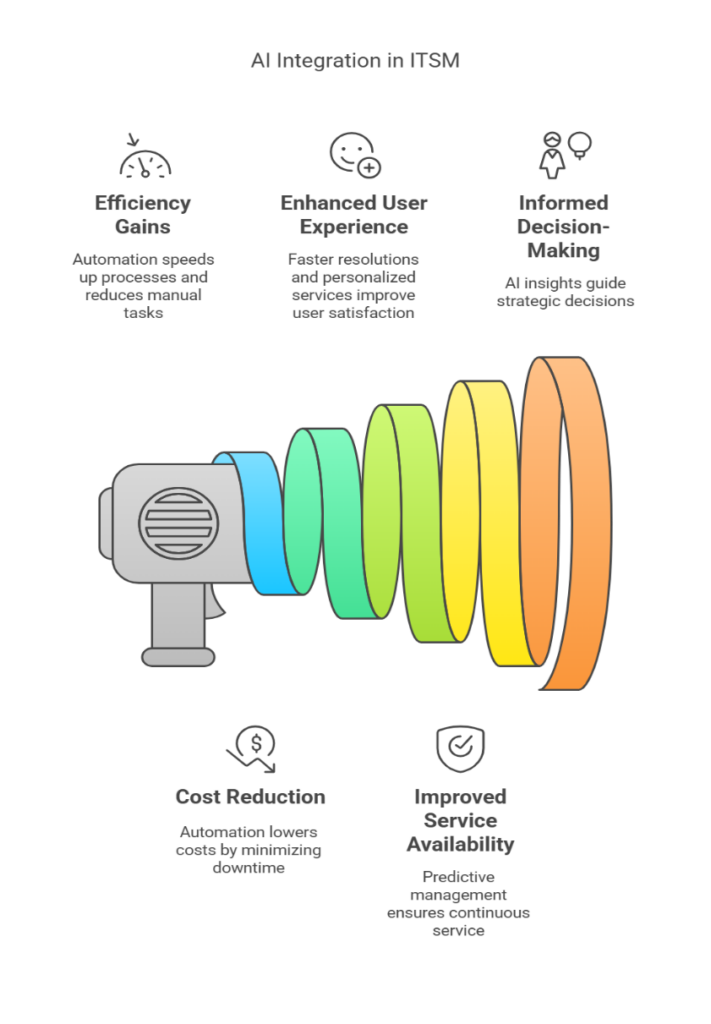
Implementing AI in ITSM, especially through integrated platforms, can lead to some serious advantages:
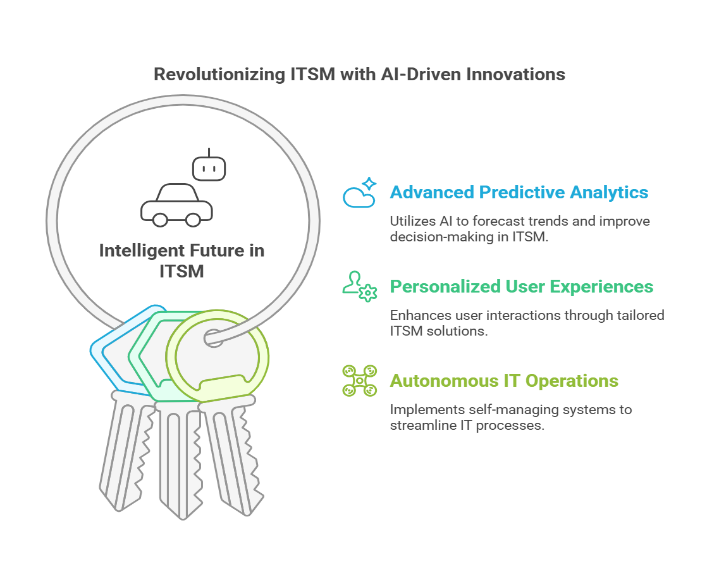
As AI technology continues to evolve, we can expect even more sophisticated applications in ITSM. This includes more advanced predictive analytics, personalized user experiences, and even autonomous IT operations. Platforms like Qinfinite are designed to leverage these advancements, providing organizations with cutting-edge ITSM solutions. They’re not just keeping up with the future; they’re building it.

The answer is definitely YES. AI is transforming ITSM, enabling IT teams to deliver faster, more efficient, and more user-centric services. By embracing AI, and exploring comprehensive platforms like Qinfinite, organizations can unlock significant benefits. Don’t just read about the future of ITSM – experience it.
Learn more about how Qinfinite can help you transform your IT service management. Click here to explore the possibilities.
Dynamic Risk Assessment: In telecom, data privacy regulations (like GDPR) are crucial. AI assesses the impact of privacy regulations on customer data handling practices, ensuring compliance without compromising service.
Example: AI helps telecom providers audit data storage practices to align with GDPR, ensuring customer privacy and regulatory adherence.
Automated Policy and Document Updates: Retailers must adapt to consumer protection and employee rights regulations. AI updates internal policies based on regulatory changes, keeping customer interactions and employee practices compliant.
Example: AI generates new training material for customer service teams when consumer rights regulations are updated, ensuring compliance with minimal manual effort.
With iAM, every application becomes a node within a larger, interconnected system. The “intelligent” part isn’t merely about using AI to automate processes but about leveraging data insights to understand, predict, and improve the entire ecosystem’s functionality.
Consider the practical applications:
Consider a large financial institution seeking to improve its customer service experience. By leveraging Agent Management Services, the institution can:
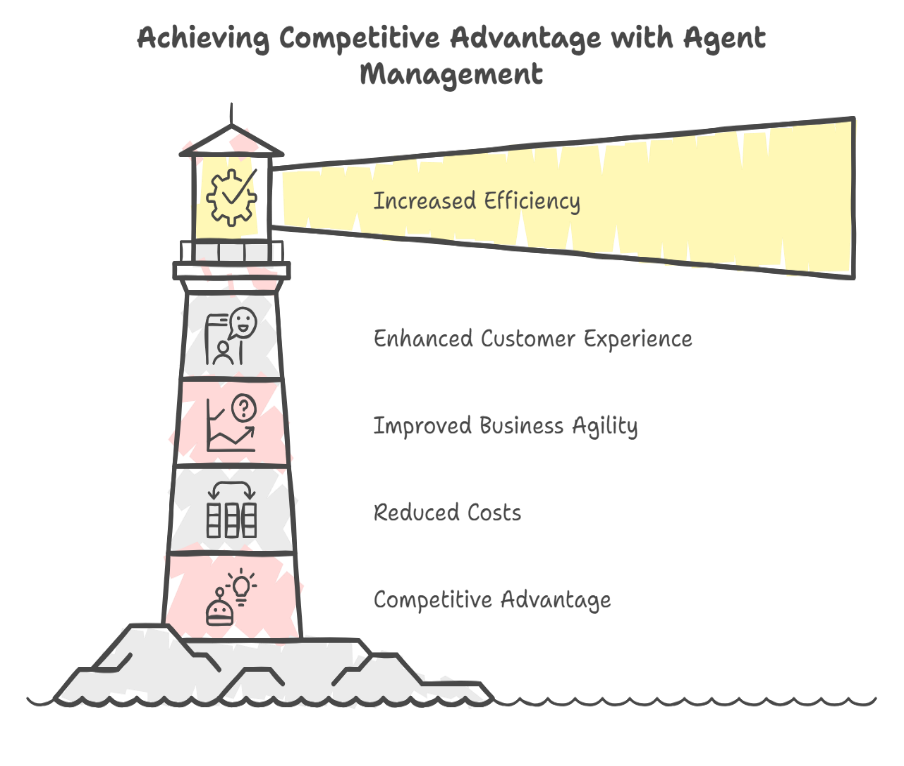
The rise of agent-driven systems marks a significant shift in the technology landscape. By embracing Agent Management Services, organizations can navigate this new era with confidence, unlock the full potential of AI, and gain a competitive advantage in the digital age.

Qinfinite’s Auto Discovery continuously scans and maps your entire enterprise IT landscape, building a real-time topology of systems, applications, and their dependencies across business and IT domains. This rich understanding of the environment is captured in a Knowledge Graph, which serves as the foundation for making sense of observability data by providing vital context about upstream and downstream impacts.
Qinfinite’s Deep Data Analysis goes beyond simply aggregating observability data. Using sophisticated AI/ML algorithms, it analyzes metrics, logs, traces, and events to detect patterns, anomalies, and correlations. By correlating this telemetry data with the Knowledge Graph, Qinfinite provides actionable insights into how incidents affect not only individual systems but also business outcomes. For example, it can pinpoint how an issue in one microservice may ripple through to other systems or impact critical business services.
Qinfinite’s Intelligent Incident Management takes observability a step further by converting these actionable insights into automated actions. Once Deep Data Analysis surfaces insights and potential root causes, the platform offers AI-driven recommendations for remediation. But it doesn’t stop there, Qinfinite can automate the entire remediation process. From restarting services to adjusting resource allocations or reconfiguring infrastructure, the platform acts on insights autonomously, reducing the need for manual intervention and significantly speeding up recovery times.
By automating routine incident responses, Qinfinite not only shortens Mean Time to Resolution (MTTR) but also frees up IT teams to focus on strategic tasks, moving from reactive firefighting to proactive system optimization.
AI in IT Service Management refers to the integration of artificial intelligence technologies to optimize, automate, and improve the processes and workflows within IT service management. AI can help in areas like incident management, service request management, problem management, change management, and automation of routine tasks, making IT service operations more efficient, scalable, and responsive.
AI improves ITSM processes in several ways:
Automation of repetitive tasks: AI automates routine tasks, such as ticket classification, prioritization, and routing, reducing manual effort and speeding up response times.
Intelligent incident management: AI helps with predictive analytics and root cause analysis, identifying issues before they affect users and improving incident resolution.
Chatbots and virtual assistants: AI-powered chatbots assist in resolving service requests and incidents, providing self-service options to users.
Improved decision-making: AI helps analyze large datasets to provide actionable insights, enhancing decision-making processes and proactive problem-solving.
The benefits of AI in ITSM include:
Increased efficiency: AI automates repetitive tasks, allowing IT teams to focus on higher-value work, leading to faster resolutions.
Cost savings: By automating manual processes and improving operational efficiency, AI helps reduce operational costs.
Improved user experience: AI-powered virtual agents provide 24/7 support, offering faster responses and self-service capabilities for users.
Predictive capabilities: AI can predict potential issues, helping to prevent service disruptions before they occur.
Better decision-making: AI’s ability to analyze large volumes of data enables IT teams to make more informed and strategic decisions.
To implement AI in ITSM, consider the following steps:
Identify key processes: Determine which ITSM processes (e.g., incident management, problem management, service request fulfillment) can benefit from AI.
Select the right AI tools: Choose AI technologies like machine learning, natural language processing (NLP), and chatbots based on your needs.
Integrate with existing systems: Ensure that AI solutions can seamlessly integrate with your existing ITSM platform and tools.
Train the AI models: Use historical data and knowledge bases to train AI systems for better accuracy and performance.
Monitor and refine: Regularly track AI performance and refine algorithms and models based on feedback and results.
Some challenges of AI in ITSM include:
Data quality: AI systems require high-quality, accurate data for training and decision-making. Poor data can lead to incorrect insights or automation errors.
Integration complexity: Integrating AI with existing ITSM tools and infrastructure can be complex and require significant effort and resources.
Cost of implementation: Implementing AI in ITSM can be costly, especially for smaller organizations that may not have the budget for advanced AI technologies.
User adoption: Employees and end users may be resistant to adopting AI-driven systems or processes due to unfamiliarity or concerns about reliability.
Managing AI accuracy: AI models need continuous monitoring and updates to ensure they provide accurate and reliable outcomes, which can be resource intensive.
Overcome the challenges of siloed tools & fragmented data with Intelligent Application Management (iAM). Unlock seamless IT operations with actionable insights.
Read moreReimagine IT management with AI, automation & self-healing capabilities of Qinfinite, an intelligent application management (iAM) platform. Opt for free trial!
Read moreUncover the transformative potential of AI agents in application management. Learn how they optimize IT operations & drive innovation with intelligent automation.
Read moreGet in touch with Quinnox Inc to understand how we can accelerate success for you.